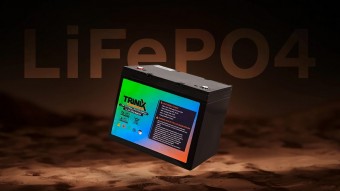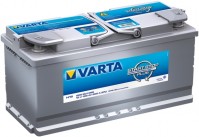Common battery types
We independently test the products and technologies that we recommend.

There are many types of batteries on the market. They differ from each other in the structure and nature of the chemical processes occurring inside. In light of power outages and the high demand for batteries for the deployment of autonomous power systems, within the framework of the material, we will consider popular types of batteries: automobile, for uninterruptible power supplies and autonomous complexes based on solar panels or wind generators. These types of batteries are most similar to each other.
- They differ from specialized batteries for uninterruptible power supply systems in the duration of the operating cycle and the uniformity of electric current release, which is determined by the different thickness of the electrode plates.
- Car batteries have a slightly higher operating voltage (14-14.2 V versus 13.5-13.8 V), as a result, the battery from the car will be constantly undercharged.
- Unsealed car batteries emit flammable hydrogen during charging.
Lead acid (SLA)
The lead-acid type is the oldest among other common types of batteries. The technology was invented by the French physicist Gaston Plante back in 1859. Lead-acid batteries are captivating due to their versatility of use and relatively affordable cost. They are used in various types of vehicles, autonomous or backup power supply systems, etc.
Structurally, this type of battery is built in a plastic case and consists of lead plates that are immersed in an electrolyte (an aqueous solution based on sulfuric acid). The principle of operation of the battery is to convert chemical energy into electrical energy when discharging and vice versa - electrical energy into chemical energy when charging. Note that during discharge a coating of lead sulfate forms on the plates. And the more the battery is discharged, the thicker the layer of deposits will be. As a result, the battery voltage drops. During battery charging, a desulfation process occurs, but in practice, the electrode plates are not completely cleaned and over time, lead-acid batteries lose their original capacity.

1 - lead dioxide plates; 2 — lead plates; 3 - liquid electrolyte; 4 - body.
Lead-acid batteries have low self-discharge, boast the absence of a “memory effect” and remain operational over a wide temperature range. At the same time, the less charge remains in such batteries, the less current they produce. Also, lead-acid batteries are afraid of deep discharges, take a long time to charge, and have large dimensions and weight. Models of the serviced structure also emit harmful fumes, which does not allow their use in enclosed spaces.
Main advantages:
- High reliability
- Low self-discharge
- No “memory effect”
- Wide operating temperature range
- Affordable price
Main disadvantages:
- 200–500 charge/discharge cycles
- Fear of deep discharges
- Release of harmful fumes
- Long charging time
- Heavy weight
Lead acid (EFB)
Many of the shortcomings of the original lead-acid batteries are corrected in EFB (Enhanced Flooded Battery) batteries. In the “inside” of such batteries, thick lead plates without any impurities are installed, moreover, the plate with a positive charge is located in a microfiber envelope filled with liquid electrolyte. Microfiber bags prevent the active mass from shedding and significantly slow down the process of sulfation of the plates during deep battery discharges. As a result, high current efficiency is ensured and the risk of short circuits is prevented.

Due to the use of thicker plates, EFB batteries require more time to replenish their energy reserves. They must be charged with suitable devices, carefully controlling the voltage, otherwise the electrolyte may boil and evaporate. In all other points of the program, improved lead-acid batteries have only a number of advantages: they are resistant to deep discharges, maintain high performance over a wide range of temperatures and demonstrate a low level of self-discharge. EFB batteries are more expensive than their original lead-acid counterparts.
Main advantages:
- High reliability
- Deep discharge resistance
- Productive operation at high and low temperatures
- Low self-discharge level
Main disadvantages:
- 300–700 charge/discharge cycles
- Release of harmful fumes
- Long charging time
- Heavy weight
- Expensive
Gel (GEL)
Gel batteries are an even more advanced type of lead-acid battery with a special thickener that brings the electrolyte to a jelly-like state. The gel electrolyte provides maximum contact with the negative and positive plates, while maintaining a uniform consistency throughout the volume. Gel batteries are manufactured in a sealed case; they do not emit any harmful substances during operation and do not require maintenance.

Gel batteries impress with their high reliability, environmental friendliness, low level of self-discharge, and long service life. At the same time, they are not best suited for buffer operation - standing on standby for a long time in order to briefly maintain power supply in a backup power mode. It makes sense to purchase such batteries for a UPS when the uninterruptible power supply has to be turned on almost every day - for example, for unstable networks with constant and long-term power outages.
Main advantages:
- 500–1000 charge/discharge cycles
- High reliability
- Deep discharge resistance
- Low self-discharge level
- No maintenance required
- Long service life
Main disadvantages:
- Sensitivity to charge quality
- Low circuit sensitivity
- Fear of low temperatures
Absorbed electrolyte (AGM)
The electrolyte in AGM (Absorbed Glass Mat) batteries is absorbed by porous fibers to give it a jelly-like structure. Such batteries are manufactured in sealed cases and have reduced electrical resistance, which allows them to deliver significant currents in short periods of time. AGM batteries are suitable as starter batteries for starting power units in cars and are very often used in power backup systems.

The competitive advantages of AGM batteries include long service life, low maintenance and overall cost, high energy consumption, and resistance to shock and vibration. However, AGM batteries do not tolerate recharging well, are sensitive to low temperatures and are heavy.
Main advantages:
- Can deliver high currents in a short time
- Deep discharge tolerance
- Low self-discharge level
- Fast charging
- Sealed body
- Resistant to shock and vibration
Main disadvantages:
- 400–800 charge/discharge cycles
- Poor recharge tolerance
- Sensitivity to low temperatures
- Heavy weight
- Expensive
Lithium-ion (Li-Ion)
Lithium-ion batteries Li-Ion are used everywhere in modern realities. They are widely used in household appliances and mobile gadgets, and have found themselves as power sources in electric vehicles and energy storage devices. Such batteries consist of a positive anode on copper foil and a negative cathode on aluminum foil. Charge and discharge in Li-Ion batteries is associated with the transfer of lithium ions between electrodes.
Li-Ion batteries have the highest capacity ratio relative to the dimensions of the case, making it possible to manufacture powerful batteries with minimal dimensions and weight. This type of battery is used in devices with high power consumption or, if necessary, to ensure maximum battery life.

Batteries of this type have a large reserve for charge/discharge cycles, support an accelerated charging procedure, and are characterized by a complete absence of “memory effect” and low self-discharge. The downside of Li-Ion batteries is their high fire hazard, susceptibility to degradation over time, and sensitivity to low temperatures. The charging process of lithium-ion batteries is monitored by a special BMS board, which controls charging and discharging, analyzes the condition of components, takes temperature, voltage and resistance readings, and balances currents between battery components.
Main advantages:
- 500–1500 charge/discharge cycles
- High capacity in a compact dimensions
- Large reserve for charge/discharge cycles
- Fast charging
- Low self-discharge level
- Complete absence of “memory effect”
Main disadvantages:
- Fire hazard
- Rapid loss of capacity at low temperatures
- Requires electronic protection circuit
- Susceptibility to "aging"
Lithium polymer (Li-Pol)
The main difference between Li-Pol batteries and Li-Ion batteries is the type of electrolyte used. In lithium-polymer batteries, its role is played by a special polymer with conductive additives. The structure of the electrolyte can be different: dry, homogeneous in the form of a gel, or with a finely porous polymer matrix. Li-Pol batteries can take flexible forms and often come in a soft shell instead of a hard shell.

The positive and negative qualities of lithium-polymer batteries are identical to the Li-Ion type. The only difference is that such batteries can be given absolutely any shape. They are distinguished by their grace and thin forms, but are more expensive than their lithium-ion peers.
Main advantages:
- 300–1000 charge/discharge cycles
- High specific capacity and energy density
- Voltage stability during discharge
- Fast charging
- Low self-discharge level
- Complete absence of “memory effect”
- Compact dimensions and light weight
- Variability of forms
Main disadvantages:
- Fire hazard
- Rapid loss of capacity at low temperatures
- Requires electronic protection circuit
- Degradation during long-term storage
Lithium iron phosphate (LiFePO4)
Lithium iron phosphate batteries LiFePO4 are considered the best in terms of all parameters for mass consumers. Only lithium titanate batteries stand head and shoulders above them, but they also cost an order of magnitude more. LiFePO4 uses lithium ferrophosphate as the cathode material. The main advantages of this type of battery are a large number of charge/discharge operating cycles (over 2000), chemical and thermal stability, the ability to work without problems in the cold, shorter charging time (including with high currents) and increased operating safety.

The control and management of these batteries is entrusted to the BMS board, which guarantees safe voltage and current limits. LiFePO4 batteries have the lowest likelihood of thermal runaway and fire. Their operating voltage is reduced. However, this also has advantages: it leads to lower internal resistance and increased charge/discharge speed. The only thing such batteries are afraid of is direct exposure to moisture - when interacting with water, active lithium is lost and the energy density decreases. Also, LiFePO4 batteries are larger in dimensions compared to lithium “classmates” (by about 30%), and they cannot be charged at subzero temperatures. Such batteries are rarely used as starting batteries for cars, since a BMS control board designed for high starting currents is very expensive.
Main advantages:
- 2000–5000 charge/discharge cycles
- Immunity to deep discharges
- Voltage stability
- Fast charging with high currents
- No pronounced “memory effect”
- Wide operating temperature range
- Durability
- High protection
Main disadvantages:
- Low voltage rating
- Sensitivity to direct exposure to moisture
- Cannot charge at sub-zero temperatures
- Larger dimensions compared to lithium batteries
Conclusion
To make the right choice in favor of energy storage devices, you need to set your priorities correctly and take into account the features of the further use of batteries. Choosing a battery by type is not a difficult task if you approach the issue wisely and weigh the pros and cons for each common technology.
Articles, reviews, useful tips
All materials





























































